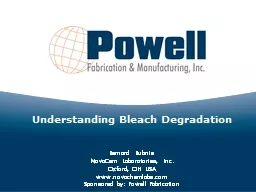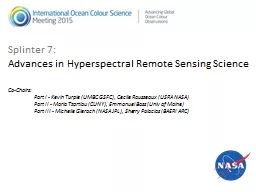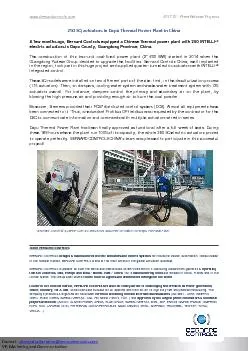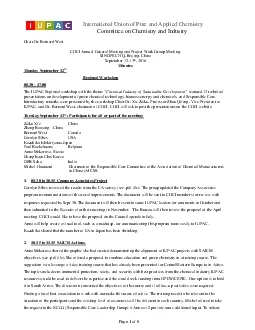PPT-Bernard Bubnis NovaCem Laboratories, Inc.
Author : yoshiko-marsland | Published Date : 2018-09-21
Oxford OH USA wwwnovachemlabscom Sponsored by Powell Fabrication Understanding Bleach Degradation NovaChem Laboratories Inc Testing bleach since 1989 1990s AWWA
Presentation Embed Code
Download Presentation
Download Presentation The PPT/PDF document "Bernard Bubnis NovaCem Laboratories, I..." is the property of its rightful owner. Permission is granted to download and print the materials on this website for personal, non-commercial use only, and to display it on your personal computer provided you do not modify the materials and that you retain all copyright notices contained in the materials. By downloading content from our website, you accept the terms of this agreement.
Bernard Bubnis NovaCem Laboratories, Inc.: Transcript
Download Rules Of Document
"Bernard Bubnis NovaCem Laboratories, Inc."The content belongs to its owner. You may download and print it for personal use, without modification, and keep all copyright notices. By downloading, you agree to these terms.
Related Documents














